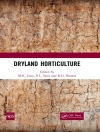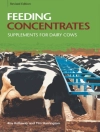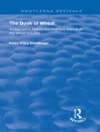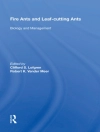Seamounts are ubiquitous undersea mountains rising from the ocean
seafloor that do not reach the surface. There are likely many
hundreds of thousands of seamounts, they are usually formed from
volcanoes in the deep sea and are defined by oceanographers as
independent features that rise to at least 0.5 km above the
seafloor, although smaller features may have the same origin.
This book follows a logical progression from geological and
physical processes, ecology, biology and biogeography, to
exploitation, management and conservation concerns. In 21 Chapters
written by 57 of the world’s leading seamount experts, the
book reviews all aspects of their geology, ecology, biology,
exploitation, conservation and management. In Section I of this
book, several detection and estimation techniques for tallying
seamounts are reviewed, along with a history of seamount
research.
This book represents a unique and fresh synthesis of knowledge
of seamounts and their biota and is an essential reference work on
the topic. It is an essential purchase for all fisheries scientists
and managers, fish biologists, marine biologists and ecologists,
environmental scientists, conservation biologists and
oceanographers. It will also be of interest to members of fish and
wildlife agencies and government departments covering conservation
and management.
Supplementary material is available at:
www.seamountsbook.info
Table of Content
1 Seamount characteristics.
Paul Wessel.
2 How many seamounts are there and where are they located?.
Adrian Kitchingman, Sherman Lai, Telmo Morato and Daniel
Pauly.
3 A history of seamount research.
Paul E. Brewin, Karen I. Stocks and Gui Menezes.
4 Physical processes and seamount productivity.
Martin White, Igor Bashmachnikov, Javier Arístegui and Ana
Martins.
5 Seamount plankton dynamics.
Amatzia Genin and John F. Dower.
6 Midwater fish assemblages and seamounts.
Filipe M. Porteiro and Tracey Sutton.
7 Seamount benthos.
Sarah Samadi, Thomas Schlacher and Bertrand Richer de
Forges.
8 Corals on seamounts.
Alex D. Rogers, A. Baco, H. Griffiths, T. Hart and Jason M.
Hall-Spencer.
9 Seamount fishes: ecology and life histories.
Telmo Morato and Malcolm R. Clark.
10 Fish visitors to seamounts.
Section A: Tunas and billfish at seamounts.
Kim N. Holland and R. Dean Grubbs.
Section B: Aggregations of large pelagic sharks above
seamounts.
Feodor Litvinov.
11 Seamounts and cephalopods.
Malcolm Clarke.
12 Air-breathing visitors to seamounts.
Section A: Marine mammals.
Kristin Kaschner.
Section B: Sea turtles.
Marco A. Santos, Alan B. Bolten, Helen R. Martins, Brian Riewald
and Karen A. Bjorndal.
Section C: Importance of seamounts to seabirds.
David R. Thompson.
13 Biogeography and biodiversity of seamounts.
Karen I. Stocks and Paul J.B. Hart.
14 Raiding the larder: a quantitative evaluation framework and
trophic signature for seamount food webs.
Tony J. Pitcher and Cathy Bulman.
15 Modelling seamount ecosystems and their fisheries.
Beth Fulton, Telmo Morato and Tony J. Pitcher.
16 Small-scale fishing on seamounts.
Helder Marques da Silva and Mário Rui Pinho.
17 Large-scale distant-water trawl fisheries on seamounts.
Malcolm R. Clark, Vladimir I. Vinnichenko, John D.M. Gordon,
Georgy Z. Beck-Bulat, Nikolai N. Kukharev and Alexander F.
Kakora.
18 Catches from world seamount fisheries.
Reg Watson, Adrian Kitchingman and William Cheung.
19 Impacts of fisheries on seamounts.
Malcolm R. Clark and J. Anthony Koslow.
20 Management and conservation of seamounts.
P. Keith Probert, Sabine Christiansen, Kristina M. Gjerde, Susan
Gubbay and Ricardo S. Santos.
21 The depths of ignorance: an ecosystem evaluation framework
for seamount ecology, fisheries and conservation.
Tony J. Pitcher, Telmo Morato, Paul J.B. Hart, Malcolm R. Clark,
Nigel Haggan and Ricardo S. Santos
About the author
Tony J. Pitcher
Fisheries Centre, University of British Columbia, Vancouver,
Canada
Telmo Morato
Department of Oceanography and Fisheries, University of the Azores,
Horta, Portugal
Paul J.B. Hart
Department of Biology, University of Leicester, United
Kingdom
Malcolm R. Clark
National Institute of Water and Atmospheric Research, Wellington,
New Zealand
Nigel Haggan
Fisheries Centre, University of British Columbia, Vancouver,
Canada
Ricardo S. Santos
Department of Oceanography and Fisheries, University of the Azores,
Horta, Portugal












